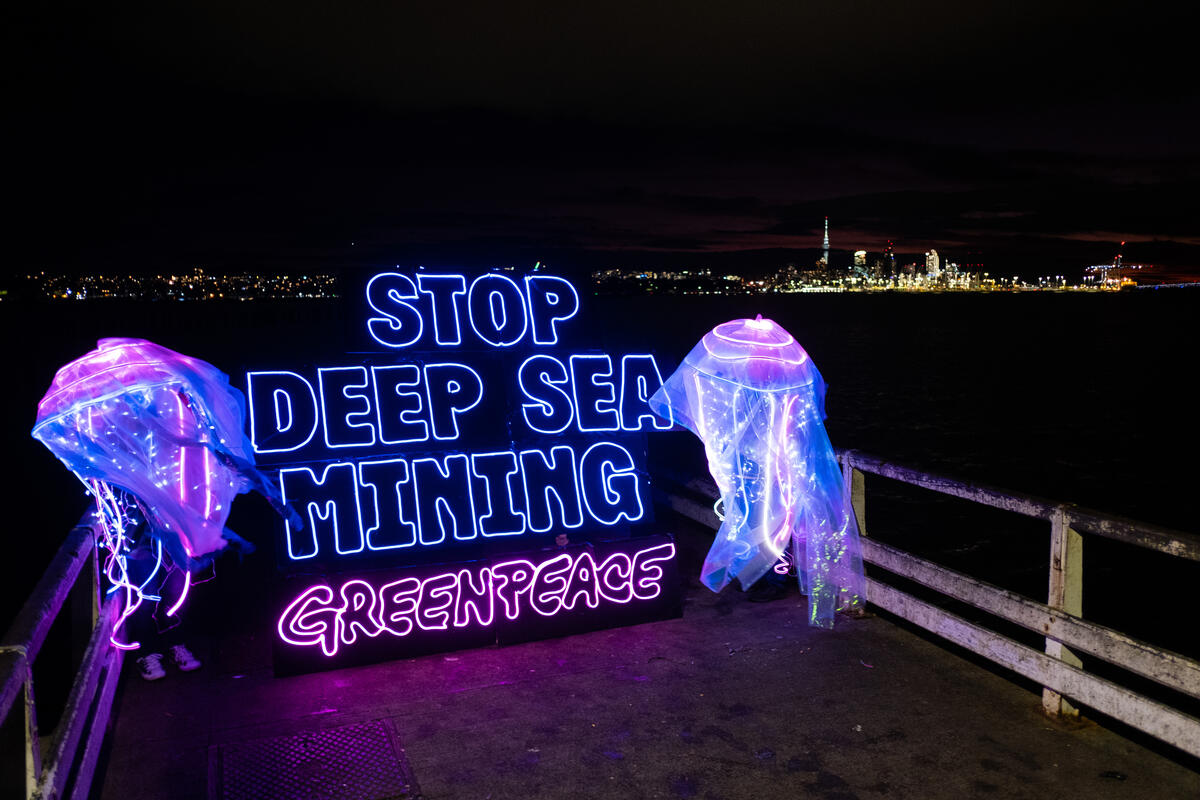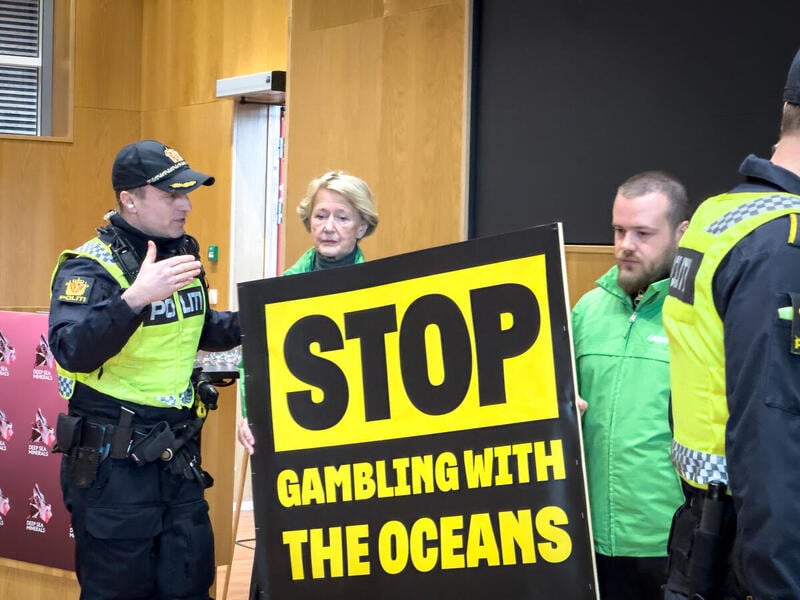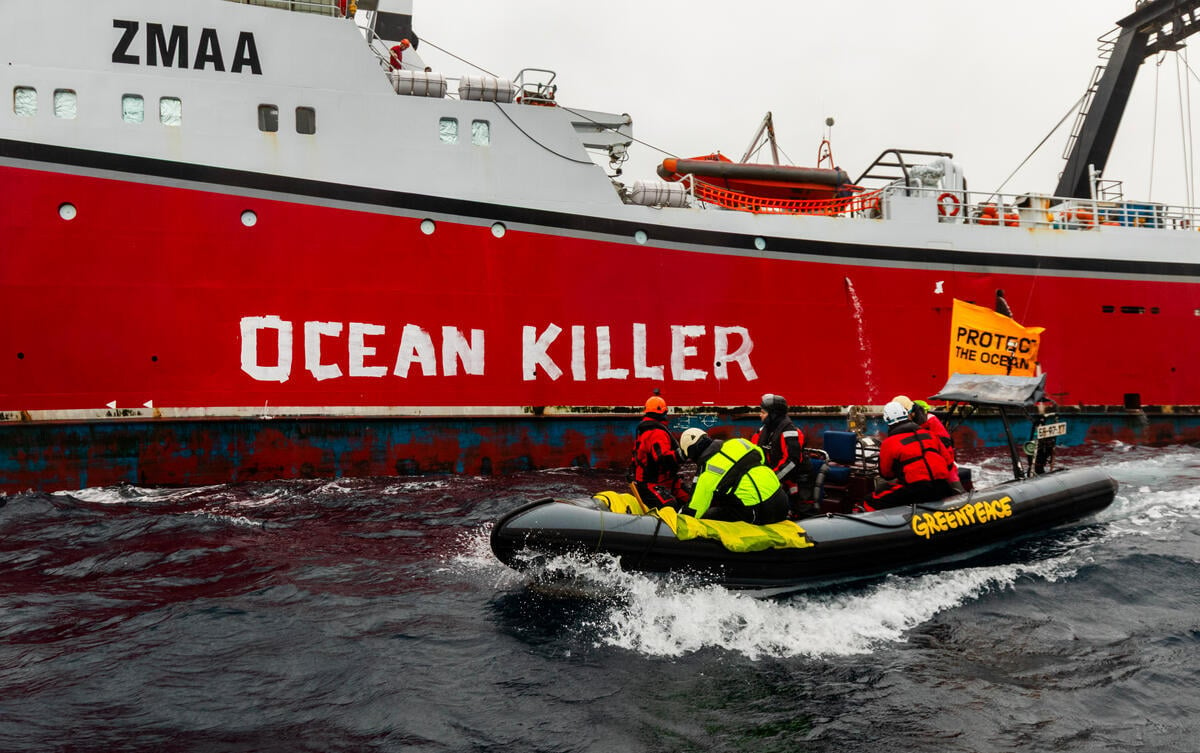In my career as a marine biologist I’ve worked in many field sites but this experience was unlike any other. I’ll never forget waking up and seeing the ice for the first time. It was surreal; almost other-worldly.
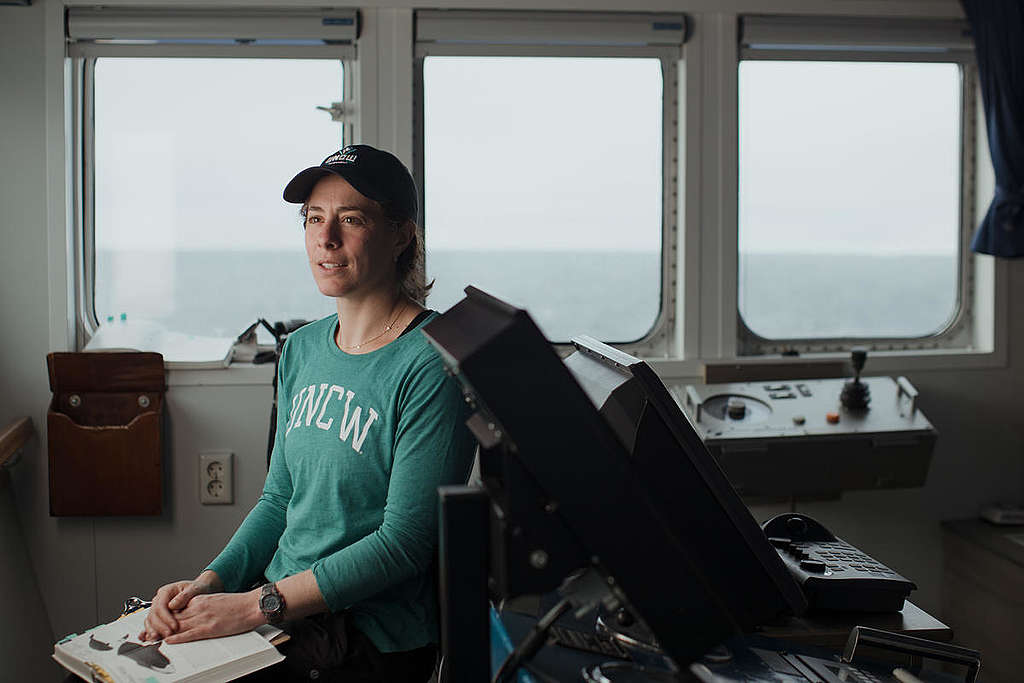
In May, I joined colleagues from the University of North Carolina Wilmington on a research expedition with Greenpeace to study the connection between Arctic Ocean ice conditions and the ecosystem in the region, as the first part of their Pole to Pole expedition. The overall goal of our research was to study the local climate and ecosystem of the Fram Strait as a whole; from the ice to the marine mammals and everything in between.
Due to the remoteness of the Arctic, preparing for the trip was an adventure in itself. Scientific equipment and field gear were carefully packed and shipped months ahead of time. Monitoring weather and ice conditions in eastern Greenland was an obsession as our departure day drew near.
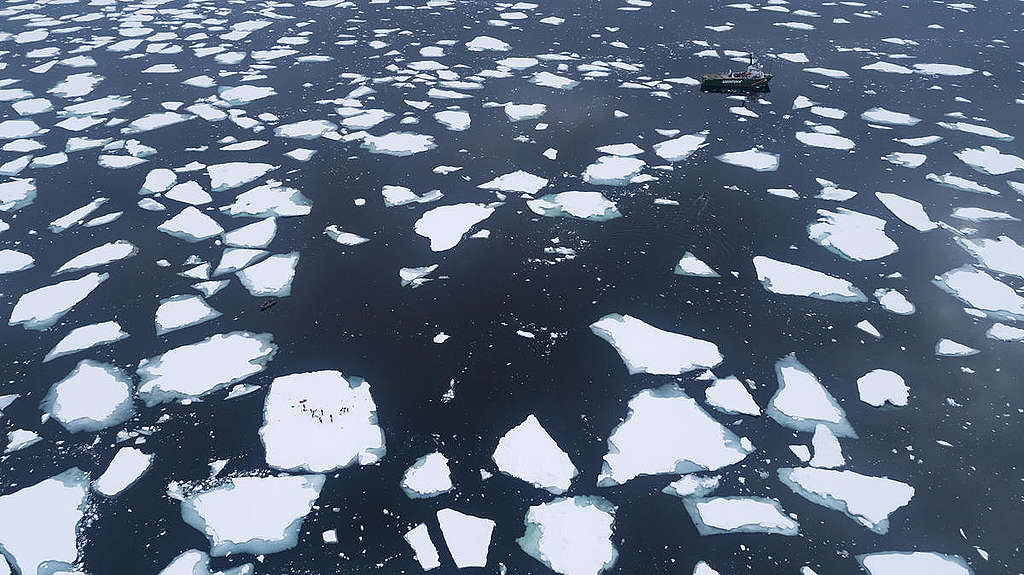
When we arrived, the conditions were a far cry from what we had left in North Carolina; much colder, windier and more remote. Besides our fearless leader and lead scientist, Till Wagner, none of us had been to the Arctic before. Our emotions ranged from exhausted to exhilarated. The initial team consisted of Dr. Till Wagner (lead scientist), Dave Wells (operations engineer, aka: equipment guru), Andrew Castagno (graduate student), Elizabeth Bailey (undergraduate student), Conner Lester (undergraduate student), and myself (post doctoral researcher).
The crew of the Arctic Sunrise was incredibly helpful in setting up a space for us to work effectively in the hold of the ship. They quickly arranged and tightly secured tables and benches for our onboard lab and helped us secure our equipment in case of rough weather; sometimes we had to drill things directly to the table!
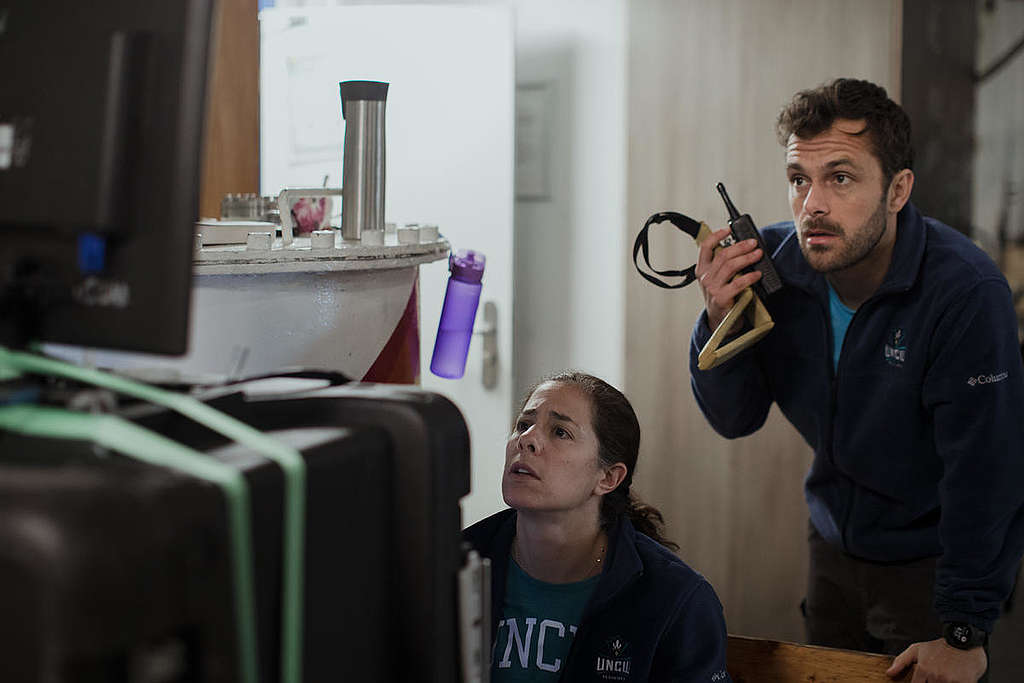
My primary job on the science team was to watch for marine mammals and birds. This involved many, many hours on the bridge – the steering room of the ship. The bridge is a very zen place, usually quiet (since the captain or mate driving the boat needs to concentrate) and high above the water, providing a great perspective for observing. Unfortunately for me, we were a bit early in the season for marine mammals, so I didn’t see any. But it wasn’t for lack of trying.
Our first goal was to travel west from Svalbard along the 79 degree North latitude line and take measurements of water conditions and sample some of the marine biology. This meant that at every two degrees longitude we would be sending down a water measuring and sampling device called a Rosette to measure the temperature and salinity, as well as collect water in bottles at varying depths, from the surface to over 250 meters deep.
Various sampling methods were used for different types of measurements, which ranged from isotopic analysis to sampling for changes in acidity levels to determining the amount of nutrients and also the amount of phytoplankton in the water. We also sampled water for trace metals, zooplankton, and ocean surface currents. Each station was a rush to collect and process as much as possible before we reached the next stop. Certain samples had to be filtered right away, others frozen, and others refrigerated. The chaos of each station was an adrenaline rush and just when we had come down off the high, we were at another stop!
We also took detailed measurements of the ice. It was a huge job; wrapping up in several layers of thermals, climbing aboard small boats in the freezing seas, and finding a suitable ice floe to work on for a few hours. Ice sampling involved measuring the ice thickness by drilling holes to the bottom and taking ice cores. The cores were cut into 10cm segments, brought back to the boat, melted down, and measured for salinity and other biological parameters.
The most striking thing about being on the ice is how bright it is. Even on a cloudy day, we all wore ski goggles and were still squinting. I gave an interview with no goggles and sunburnt my eyes. It was quite uncomfortable but thankfully only lasted a few days.
Just as I felt that I was getting into the swing of living and doing science on a ship, it was time for me to leave. The unique environment, my naïve excitement, and the absence of darkness was a tough combination for any kind of rest on the boat. Although this expedition was my first foray into the polar oceans, I sincerely hope it will not be my last.
Now that the rest of the science team is back on dry land, we begin the long slow process of sample and data analysis. It will take us years to fully process everything that was collected in the few short weeks at sea, but it is definitely worth it. I can’t wait to see what the data show! The opportunity to not only see but also study this fantastic place is something that I will never take for granted.
Hillary Glandon is a post-doctoral researcher at the University of North Carolina Wilmington

